
© Garden Cottage Nursery, 2022






Why Did They
Change The Name?!
Taxonomy
When a plant species is first described by a botanist in a learned journal, monograph or flora it is a description based upon a
specimen the botanist believes to be typical for the species. This “type” specimen is kept dried and pressed in a herbarium and
clearly marked as the type for that species against which all other examples in the future must be compared.
The first species of a genus to be described is taken as also being the “type” for the genus so any plant with pretensions to being
included in the type’s genus must share enough characters to justify sharing the generic name.

As we said earlier Linnaeus gave us a binomial system for naming plants by genus and species. He identified and classified plants
by sexual characters, essentially counting the number of stamens and carpels a plant had and grouping together those with similar
numbers and shapes.
Without a more accurate way of gauging plants relationships to each other “gross morphological” based plant classification
continued along like this for another 200 or so years.
In the 1950s James Watson, Francis Crick, Maurice Wilkins, and Rosalind Franklin identified the DNA helix, the punch card that
programmes cell creation for all known life on Earth.
In 2000 the Human Genome Project finished it’s first draft and since then computer and DNA sequencing technologies have raced
forward so that it is now comparatively cheap and quick to sequence the genes of plants.
Genes mutate at a fairly steady rate over generations so with lots of clever thinking and number crunching it is possible to roughly
gauge how long ago certain allele arose and with enough current samples across the range you can work back down the branches
of the family tree plants to see where groups diverged. Studying organisms evolutionary history is known as Phylogenetics.
Phylogenetic studies of plants over the last 15 or so years have thrown up all manner of surprises as to the true relationships
between plants compared to the assumed relationship we grew up with.
A number of old plant families and genera have been shown to be not actually directly related or to have included interlopers from
other branches.
Most recent name changes amongst well known garden plants have come about through phylogenetic studies that have revealed
what were single genera to be polyphyletic.
A Polyphyl is made up of groups of species from different branches or twigs of the tree of life, sometimes even with already
separately named genera in between. They have certain shared traits but these are the result of convergent evolution
(independently developing the same traits) or reversion rather than a common ancestor. Genera or families should be
monophyletic, all emerging from a common locus.

Some plant name changes occur because diligent botanists have spotted that plants described as a different species or in different
genera are not distinct enough, or even at all, to justify a separate generic or specific name: Schizostylis coccinea was sunk back in
to Hesperantha coccinea.
Sometimes a single or group of related species are deemed distinct enough from the other plants in the genus to deserve a genus
of their own: Lithospermum diffusum to Lithodora diffusa.
Other changes occur when a plant became widely known by one name which was actually published after the plant had already
been validly described under a different name: Primula littoniana to Primula viallii.
On occasion plants have become widely known by incorrectly spelled names: Buddleia to Buddleja.
Changes to plant names usually take quite a while to bed-in and reach general acceptance amongst botanical institutions, so by the
time they come to the attention of gardeners they will probably have been thoroughly tested and checked.

Quite a few recent name changes that affect gardeners happened because a genus of plants was shown by phylogenetics to only
be a subset, or scattered amongst members of a second broader genus and were therefore not thought to deserve to have their
own generic epithet and were ‘sunk’ into the broader genus.
Much of the recent revisions have been collected into the works of the Angiosperm Phylogeny Group (AGP) who published 4 major
papers between 1998 and 2016 that reshaped the understanding of the tree of life for flowering plants.


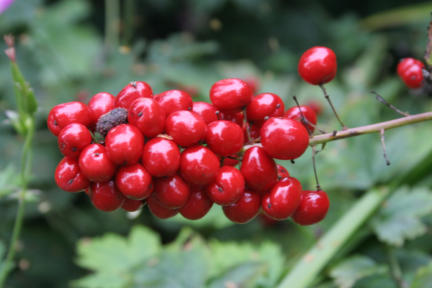
Phylogony showed that Cimicifuga (left) had it’s species scattered amongst the
family tree of Actaea (below), so all Cimicifuga were renamed to be Actaea.
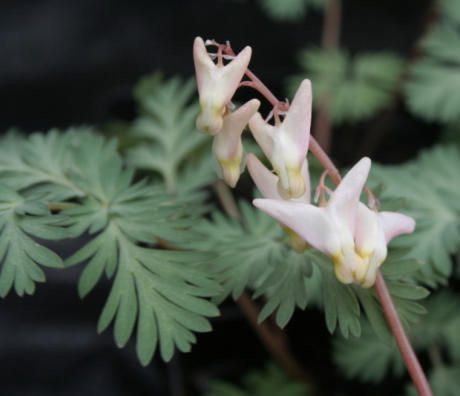
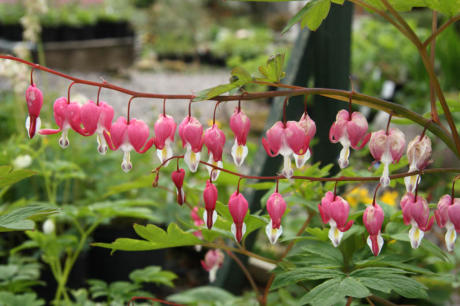
Going in the opposite direction:
The popular perennial known as ‘Dutchman’s Breeches’, Dicentra spectablis (above) was found to be on it’s own separate
branch of the poppy family from the other Dicentra (below) so was given a new genus to become Lamprocapnos spectablis.
Asteraceae, the daisy family has compound ‘flowers’ made of composite inflorescens of often hundreds of small flowers gathered
together. Their small size and the similarity between species of the individual flowers have historically made discerning their
relationships to to each other difficult based on gross morphological characters.
Unsurprisingly Asteraceae is full of very large polyphylectic genera in need of sorting out, unfortunately for gardeners many of these
jumbled genera include popular garden plants.
Aster amellus is the type species for both the genus Aster and the family Asteraceae, as such it’s name is pretty much set in
taxonomical stone. The genus Aster is polyphylectic and just about all the varieties we grow in our gardens as Aster come separate
branches of the Asteraceae tree to Aster, so their names should be changed, including:

Eurybia divaricata
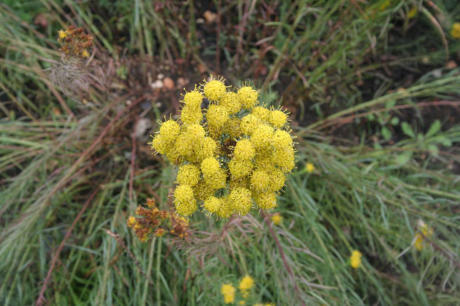
Galatella linosyris

Galatella sedifolia
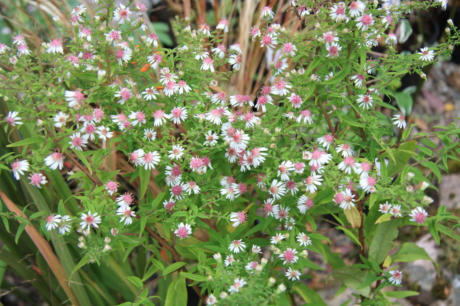
Symphyotrichum lateriflorum

Symphyotrichum novi-belgii

Symphyotrichum tradescantii
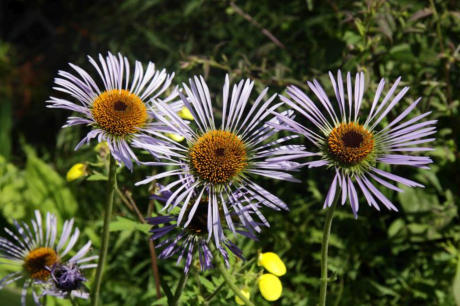
Aster diplostephioides
Many of the Eurasian species of Aster remain unchanged, a fair few of which are commonly cultivated.
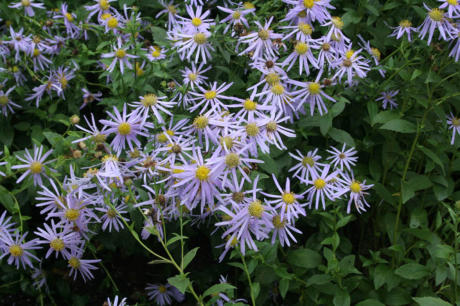
Aster x frikartii 'Mönch'

© Garden Cottage Nursery, 2021






Why Did They Change The
Name?!
Taxonomy
When a plant species is first described by a botanist in a
learned journal, monograph or flora it is a description based
upon a specimen the botanist believes to be typical for the
species. This “type” specimen is kept dried and pressed in a
herbarium and clearly marked as the type for that species
against which all other examples in the future must be
compared.
The first species of a genus to be described is taken as also
being the “type” for the genus so any plant with pretensions to
being included in the type’s genus must share enough
characters to justify sharing the generic name.

As we said earlier Linnaeus gave us a binomial system for
naming plants by genus and species. He identified and
classified plants by sexual characters, essentially counting the
number of stamens and carpels a plant had and grouping
together those with similar numbers and shapes.
Without a more accurate way of gauging plants relationships to
each other “gross morphological” based plant classification
continued along like this for another 200 or so years.
In the 1950s James Watson, Francis Crick, Maurice Wilkins,
and Rosalind Franklin identified the DNA helix, the punch card
that programmes cell creation for all known life on Earth.
In 2000 the Human Genome Project finished it’s first draft and
since then computer and DNA sequencing technologies have
raced forward so that it is now comparatively cheap and quick to
sequence the genes of plants.
Genes mutate at a fairly steady rate over generations so with
lots of clever thinking and number crunching it is possible to
roughly gauge how long ago certain allele arose and with
enough current samples across the range you can work back
down the branches of the family tree plants to see where groups
diverged. Studying organisms evolutionary history is known as
Phylogenetics.
Phylogenetic studies of plants over the last 15 or so years have
thrown up all manner of surprises as to the true relationships
between plants compared to the assumed relationship we grew
up with.
A number of old plant families and genera have been shown to
be not actually directly related or to have included interlopers
from other branches.
Most recent name changes amongst well known garden plants
have come about through phylogenetic studies that have
revealed what were single genera to be polyphyletic.
A Polyphyl is made up of groups of species from different
branches or twigs of the tree of life, sometimes even with
already separately named genera in between. They have
certain shared traits but these are the result of convergent
evolution (independently developing the same traits) or
reversion rather than a common ancestor. Genera or families
should be monophyletic, all emerging from a common locus.

Some plant name changes occur because diligent botanists
have spotted that plants described as a different species or in
different genera are not distinct enough, or even at all, to justify
a separate generic or specific name: Schizostylis coccinea was
sunk back in to Hesperantha coccinea.
Sometimes a single or group of related species are deemed
distinct enough from the other plants in the genus to deserve a
genus of their own: Lithospermum diffusum to Lithodora diffusa.
Other changes occur when a plant became widely known by
one name which was actually published after the plant had
already been validly described under a different name: Primula
littoniana to Primula viallii.
On occasion plants have become widely known by incorrectly
spelled names: Buddleia to Buddleja.
Changes to plant names usually take quite a while to bed-in and
reach general acceptance amongst botanical institutions, so by
the time they come to the attention of gardeners they will
probably have been thoroughly tested and checked.

Quite a few recent name changes that affect gardeners
happened because a genus of plants was shown by
phylogenetics to only be a subset, or scattered amongst
members of a second broader genus and were therefore not
thought to deserve to have their own generic epithet and were
‘sunk’ into the broader genus.
Much of the recent revisions have been collected into the works
of the Angiosperm Phylogeny Group (AGP) who published 4
major papers between 1998 and 2016 that reshaped the
understanding of the tree of life for flowering plants.
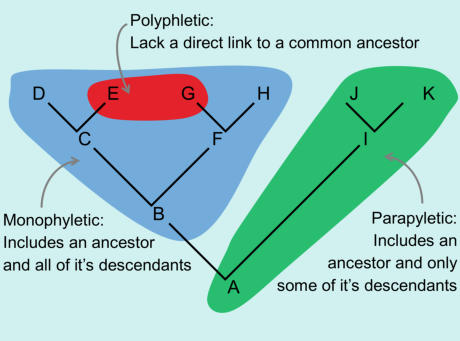


Phylogony showed that
Cimicifuga (left) had it’s
species scattered amongst
the family tree of Actaea
(below), so all Cimicifuga
were renamed to be Actaea.


Going in the opposite direction:
The popular perennial known as ‘Dutchman’s Breeches’,
Dicentra spectablis (above) was found to be on it’s own
separate branch of the poppy family from the other Dicentra
(below) so was given a new genus to become Lamprocapnos
spectablis.
Asteraceae, the daisy family has compound ‘flowers’ made of
composite inflorescens of often hundreds of small flowers
gathered together. Their small size and the similarity between
species of the individual flowers have historically made
discerning their relationships to to each other difficult based on
gross morphological characters.
Unsurprisingly Asteraceae is full of very large polyphylectic
genera in need of sorting out, unfortunately for gardeners many
of these jumbled genera include popular garden plants.
Aster amellus is the type species for both the genus Aster and
the family Asteraceae, as such it’s name is pretty much set in
taxonomical stone. The genus Aster is polyphylectic and just
about all the varieties we grow in our gardens as Aster come
separate branches of the Asteraceae tree to Aster, so their
names should be changed, including:

Eurybia divaricata

Galatella linosyris

Galatella sedifolia

Symphyotrichum lateriflorum

Symphyotrichum novi-belgii

Symphyotrichum tradescantii

Aster diplostephioides
Many of the Eurasian species of Aster remain unchanged, a fair
few of which are commonly cultivated.















